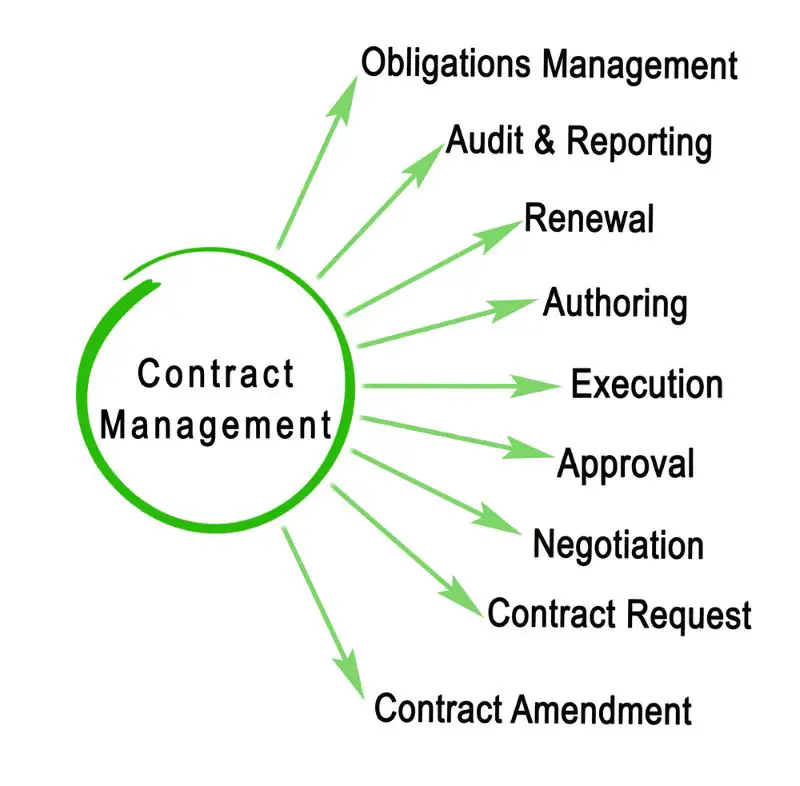Click here to get this post in PDF

Contract lifecycle management is a tool that makes managing contract executions less complicated and overpowering. With contract lifecycle management, contracts are easily accomplished to control expenses and curb legal and abidance stake fulfilled.
An organization can only enjoy the unlimited capability of their contracts when they are vigorously managed. Contract lifecycle management oversees an establishment’s contracts from start-up through the allotment procedure, which happens via execution to cessation or resurgence.
Contract lifecycle management comprises elements like:
- Contract paper oversight is the primary storage for creating and establishing applicable contracts and agreements history.
- Contract exploration identifies exploration capacity to uncover tasks in a contract.
- Contract blueprint which uses a pre-authorized passage archive, technological stamps, and distinct business examples
- Signals and notices which provides recommendation on landmarks comprising growth, continuation, and expiry duration
- Adherence comprises contract edition management and audit track. It trails compliance to regulatory and statutory provisions and any digressions.
- Finally, a summary includes personalized reports on vendor execution and contract rate on a graphic or pictorial interface.
Contract lifecycle management represents an outcome and cycle for organizing the existence progressions of contracts and authorizations created, developed, and conducted, intended to influence an establishment positively.
There are nine stages in contract lifecycle management, and these stages are listed below:
Development

The first stage in contract lifecycle management is development, where the initial blueprint is written and formulated. This may be an extraordinarily wordy and prolonged stage because it requires data collection and collation, which involves the two agreement sides to the contract.
The risks, disadvantages, advantages, and possible outcomes are all interrogated and thought out adequately on in this stage. These are all under data collation and collection. All information will either tell if there is a possibility of contract execution or not. At this stage, it would be known if there would be the need for continuity if it should be stopped or paused. The decision arrived at will open up other stages and phases.
Contract Lifecycle management helps in the development and curation of contracts. It comprises different tools and software but in a very simplified process. Contract lifecycle management makes this process more straightforward than it would originally have been, reducing the complexity of this stage.
These complexities could include information storage and combination to develop a valid contract. With contract lifecycle management, these complications are facilitated. Contract lifecycle management begins its processes from scratch, which encompasses contract development.
All the tools needed for this stage are stored in a centralized document and can be modified and accessed by any team member at any time. Because there is no need for outdated mediums like paperwork, printing, and corrections that increase the length of time for each work, the development process is manageable and smoother.
Deliberations

The next stage is the deliberation process. In this process, the blueprint of the contract is outlined and needs to be deliberated by each team included. These deliberations, considerations, and contemplations go on until the final approval to move to the next phase. The risks have been sub-lined but are still deliberated on. Revenues and income are at this stage, speculated and agreed on with a fixed sum.
This stage could take a lot of time, and this is because everything agreed on at this stage will most likely be what will be executed and implemented. Many pieces of research have revealed that at this stage, only one in ten contracts have spent 24hours, and this shows how time-consuming this phase is.
Many teams spend 22 hours or more deliberating on plans and executions, and this stage requires at least four new contract creations and developments. These latest developments are implemented in each contract development before a new process is embarked on.
Without contract lifecycle management, these hours maybe more, and it could take days. Contract lifecycle management makes this process more computerized, which is more predisposed than manual paperwork.
Because this process is computerized, these changes can be made from different locations of each team but the same file. These modifications are seen and approved by every team member before the final authorization, which is made possible by contract lifecycle management tools.
Legal Authorization And Compliance
After the major work of deliberations, modifications, and approval, the next stage is legal to check and compliance. In this stage, contracts would very likely require the services f a lawyer and legal adviser. Both teams would need to make informed decisions, and they can only make these decisions when aided.
The documents created and formed in previous stages will, at this point, be submitted for scrutiny and investigations by both internal and external legal advisors. They may or may not be team members, but it is imperative that they are. This would help in this phase and subsequent aids should the need arise.
Every legal mishap is noticed, overruled, and replaced. As soon as all legal teams appropriately examine and investigate it, it is authorized and permitted to proceed to the next stage. This process also largely determines the success of every contract execution, and therefore, it must be effectively looked into with every aspect illuminated and clarified.
The software in contract management ensures that every highlighted concern is correctly checked and balanced by all team members. It is still in centralized storage and can be accessed at any point and location.
Agreement Signing

Every tiny detail has been paid attention to in this stage, and every box ticked. Both teams can fully authorize and sign contracts for execution and implementation. With the help of contract lifecycle management, this process is easily and swiftly done online, and it does not need to go through the manual paper, pen, and ink process.
Because of contract lifecycle management software, the centralized document is sent to approved members of the team for innovative electronic signing. As usual, these changes are seen by all team members, including those who signed them.
The contract document, at this stage, is signed and sent to other members of the team for further undertaking and execution. At this point also, the record is permanently saved on the system as a legal contract document binding two parties.
It is very important to note that because of the efficiency of Contract lifecycle management software, each team member is notified of every modification and who made them. This ensures security and safekeeping of each document which leaves it unable to be tampered with.
Contract Execution
At this stage, most of the critical work has been done, and members of the top management have accomplished their part. In this stage, other members of the team step in. There is execution and rapport with vendors and procurement officers.
Every aim and objective in the contract is achieved at this point. There is buying, procurement, installation, and every other process this stage requires. Depending on what this contract aims to achieve, this process unveils and sets it on a running course.
Planned payments are made, and there are visible implementations and enactments. At this state, nothing outside the plan is embarked upon. There is no impulsive spending or money-wasting because everything has been authorized and agreed on in previous stages.
This is where contract lifecycle management plays a crucial role. Each function is outlined and distributed in the same centralized documents with the software. Each team member can check progress and give feedback on project executions, and it is seen and monitored by all.
Contract lifecycle document ensures proper checks, monitoring, and follow-up for successful executions.
Vendor Payments And Settlement
In this stage, vendors are settled and paid off. Contract lifecycle management helps to ensure this by constant reminders and notifications from the to-do list. Vendors must be sorted, and this stage is simplified and quickly executed with contract lifecycle management.
Reviewing And Final Corrections

At this stage, most of the work has been implemented and executed. This stage majorly encompasses reviews, assessments, checks, and corrections. In previous steps, every agreement deliberated and agreed on is reviewed to ensure proper executions.
Everything missed out on is corrected until every intent and aim in the contract has been accomplished, line to line. Contract Lifecycle Management fulfils this task by producing a box that ticks off accomplished and nearly accomplished tasks. Nothing is missed in this tool, and there is an excellent and successful execution.
Every team member checks assigned roles from the centralized document and confirm performance. There are personal and general checks in this stage, and everything has been appropriately commissioned.
FINAL REVIEW
In this stage, every final correction is or has been made. The execution is finalized, and the contract is finally reviewed and modified. The last review goes through all the processes again to note what may have been missed out on before it is submitted for final documentation.
FINAL DOCUMENTATION
Contract lifecycle management ensures that this document and processes can be assessed and reached at any required point.
It keeps these documents safe for as long as it is needed. The storage system in the contract lifecycle management tool keeps these documents secured and transferrable in the same document format.
You may also like:
